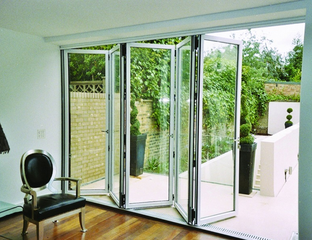

A slim line aluminum window system is a design philosophy focused on maximizing the glass area and minimizing the visible frame. The goal is to create a sleek, contemporary look that allows more natural light into a space and offers an unobstructed view. This is achieved by using thin, strong aluminum profiles for the frame.
Unfortunately, I can't provide specific, in-depth knowledge about a "Slim Line System" for a "Metalex" or any other specific aluminum window making company. The term "Slim Line System" is a general descriptor used by many different manufacturers to refer to a style of window with a narrow, minimalist frame. The exact specifications, features, and components of such a system would be proprietary to a particular company.
However, I can provide you with a comprehensive overview of the general characteristics and advantages of a "slim line" aluminum window system, which will give you a solid foundation of basic knowledge.
A slim line aluminum window system is a design philosophy focused on maximizing the glass area and minimizing the visible frame. The goal is to create a sleek, contemporary look that allows more natural light into a space and offers an unobstructed view. This is achieved by using thin, strong aluminum profiles for the frame.
Here are the fundamental characteristics and components you'd typically find in a slim line system, regardless of the manufacturer:
Unfortunately, I can't provide specific, in-depth knowledge about a "Slim Line System" for a "Metalex" or any other specific aluminum window making company. The term "Slim Line System" is a general descriptor used by many different manufacturers to refer to a style of window with a narrow, minimalist frame. The exact specifications, features, and components of such a system would be proprietary to a particular company.
However, I can provide you with a comprehensive overview of the general characteristics and advantages of a "slim line" aluminum window system, which will give you a solid foundation of basic knowledge.
A slim line aluminum window system is a design philosophy focused on maximizing the glass area and minimizing the visible frame. The goal is to create a sleek, contemporary look that allows more natural light into a space and offers an unobstructed view. This is achieved by using thin, strong aluminum profiles for the frame.
Here are the fundamental characteristics and components you'd typically find in a slim line system, regardless of the manufacturer:
Choosing a slim line aluminum window system offers several significant benefits:
Aesthetics: The most prominent advantage is the modern, elegant appearance. The thin frames create a clean, minimalist look that complements contemporary architecture.
Natural Light: With less frame obstructing the view, more glass is exposed, allowing a maximum amount of natural light to enter the room. This can make spaces feel brighter and larger.
Energy Efficiency: Despite the thin frames, modern slim line systems with a thermal break and high-performance glazing are highly energy-efficient. They can significantly reduce heating and cooling costs.
Durability: Aluminum is inherently a very durable material. It doesn't rust, warp, or rot, and it requires minimal maintenance.
Versatility: These systems are highly versatile and can be used in a wide range of applications, from residential homes to commercial buildings. They are available in various configurations, including fixed, casement, sliding, and tilt-and-turn windows.
